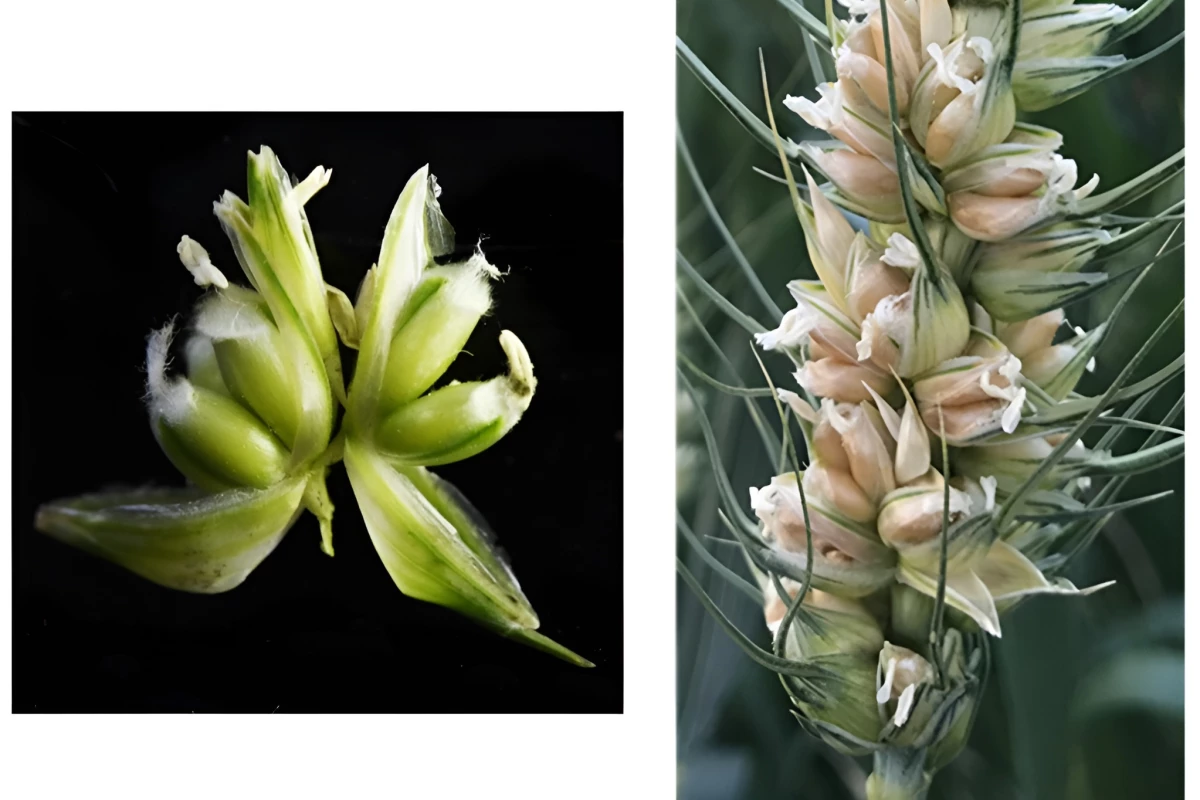Science
New Genetic Discovery Could Triple Wheat Grain Yields

A groundbreaking discovery by researchers at the University of Maryland has the potential to triple wheat grain yields without requiring additional land, water, or fertilizer. This advancement stems from identifying a genetic mechanism that enables certain mutant wheat plants, known as MOV (multi-ovary) wheat, to produce multiple grains per floret, significantly increasing overall yields.
In typical wheat plants, each floret produces a single grain. However, MOV wheat can produce up to three grains from a single floret due to the presence of additional ovaries. This phenomenon had remained largely unexplained until now. Researchers meticulously mapped the DNA of MOV wheat, comparing it with that of conventional bread wheat to uncover differences.
The team discovered that a dormant gene, WUSCHEL-D1 (WUS-D1), becomes active in MOV wheat. This gene plays a crucial role in stimulating the development of extra female flower parts, such as pistils and ovaries, which are essential for grain production. By activating WUS-D1 in cultivated wheat plants, scientists believe they can enhance grain output significantly.
Pathway to Higher Yields
According to Assoc. Prof. Vijay Tiwari, co-author of the study, “Pinpointing the genetic basis of this trait offers a path for breeders to incorporate it into new wheat varieties, potentially increasing the number of grains per spike and overall yield.” The implications of this research could be profound, especially as global food demand continues to rise.
Using advanced gene editing techniques, researchers are now poised to focus on improving this trait in wheat crops. The findings were published in the journal Proceedings of the National Academy of Sciences, highlighting the significance of this discovery within the agricultural science community.
As the world grapples with food security challenges, innovations like this could contribute to sustainable agricultural practices by maximizing yield from existing resources. The ability to produce more grain from the same amount of land could help mitigate some of the pressures faced by farmers, particularly in regions where arable land is limited.
This breakthrough not only showcases the potential of genetic research in agriculture but also emphasizes the importance of continued investment in scientific exploration. Enhanced crop yields through such innovative techniques may well play a vital role in addressing future food shortages and ensuring food security for a growing global population.
-

 Technology5 months ago
Technology5 months agoDiscover the Top 10 Calorie Counting Apps of 2025
-

 Health2 months ago
Health2 months agoBella Hadid Shares Health Update After Treatment for Lyme Disease
-

 Health3 months ago
Health3 months agoErin Bates Shares Recovery Update Following Sepsis Complications
-

 Technology4 months ago
Technology4 months agoDiscover How to Reverse Image Search Using ChatGPT Effortlessly
-

 Technology1 month ago
Technology1 month agoDiscover 2025’s Top GPUs for Exceptional 4K Gaming Performance
-

 Technology2 months ago
Technology2 months agoElectric Moto Influencer Surronster Arrested in Tijuana
-

 Technology5 months ago
Technology5 months agoMeta Initiates $60B AI Data Center Expansion, Starting in Ohio
-

 Technology5 months ago
Technology5 months agoRecovering a Suspended TikTok Account: A Step-by-Step Guide
-

 Health4 months ago
Health4 months agoTested: Rab Firewall Mountain Jacket Survives Harsh Conditions
-

 Lifestyle5 months ago
Lifestyle5 months agoBelton Family Reunites After Daughter Survives Hill Country Floods
-

 Technology4 months ago
Technology4 months agoHarmonic Launches AI Chatbot App to Transform Mathematical Reasoning
-

 Technology3 months ago
Technology3 months agoUncovering the Top Five Most Challenging Motorcycles to Ride





















